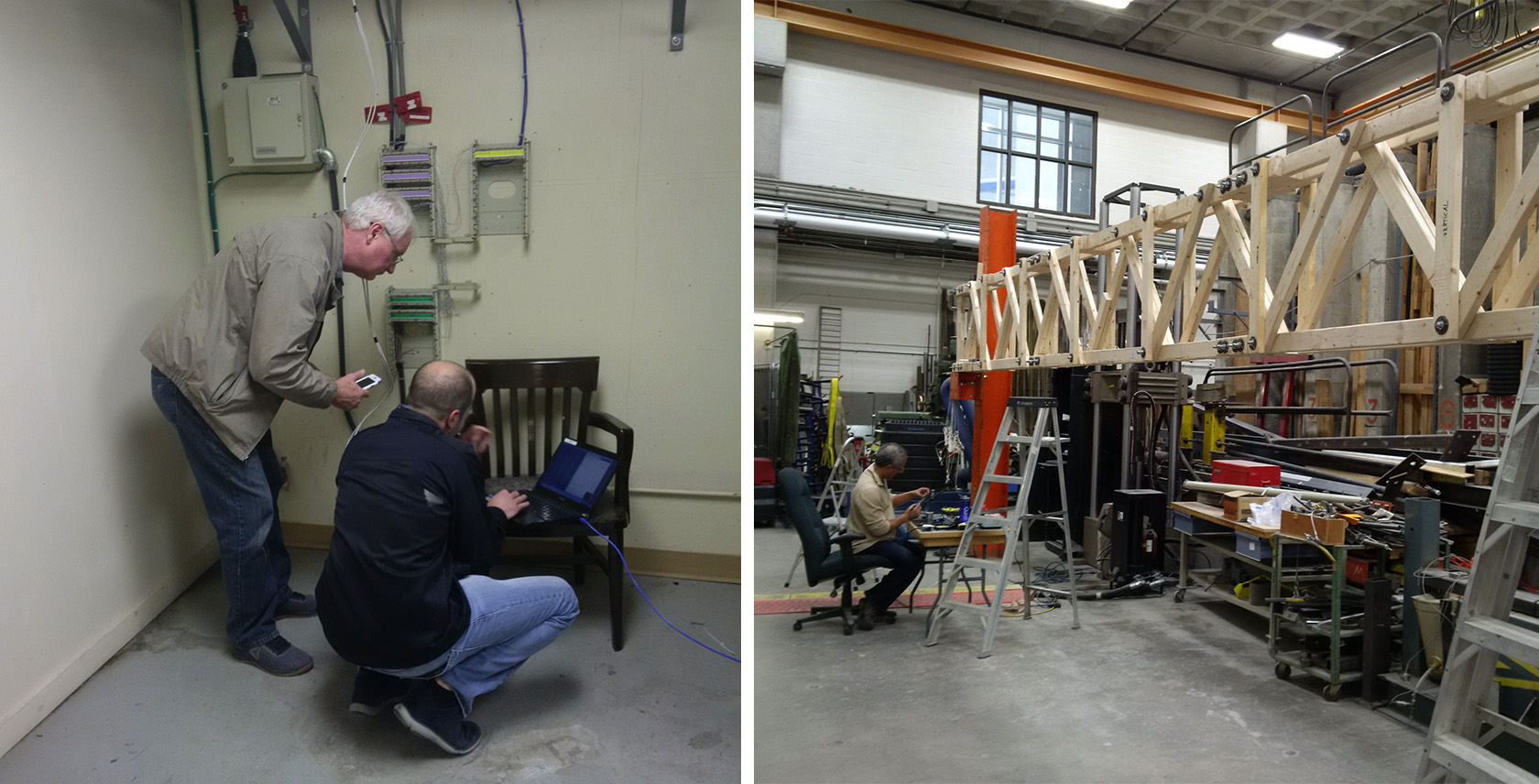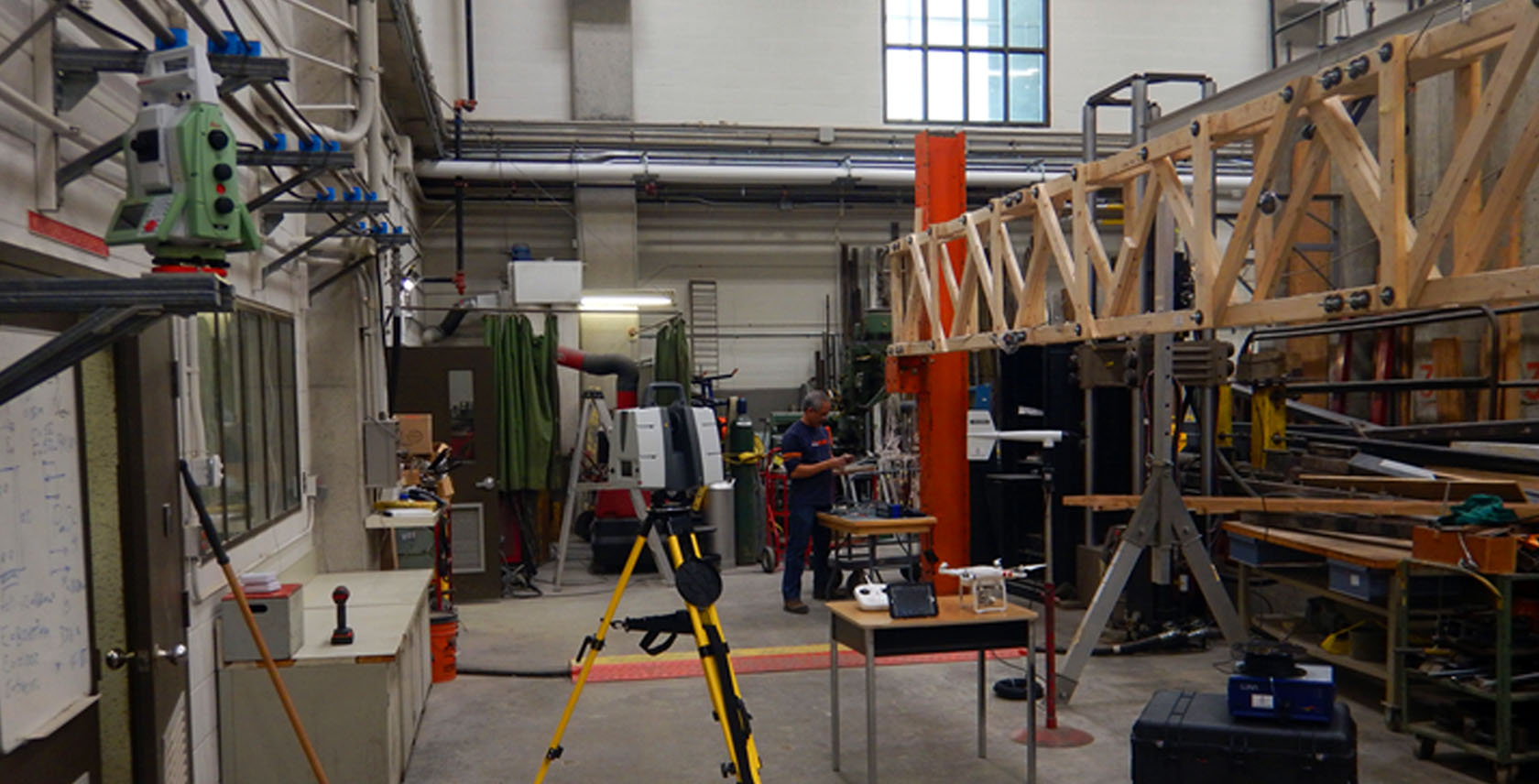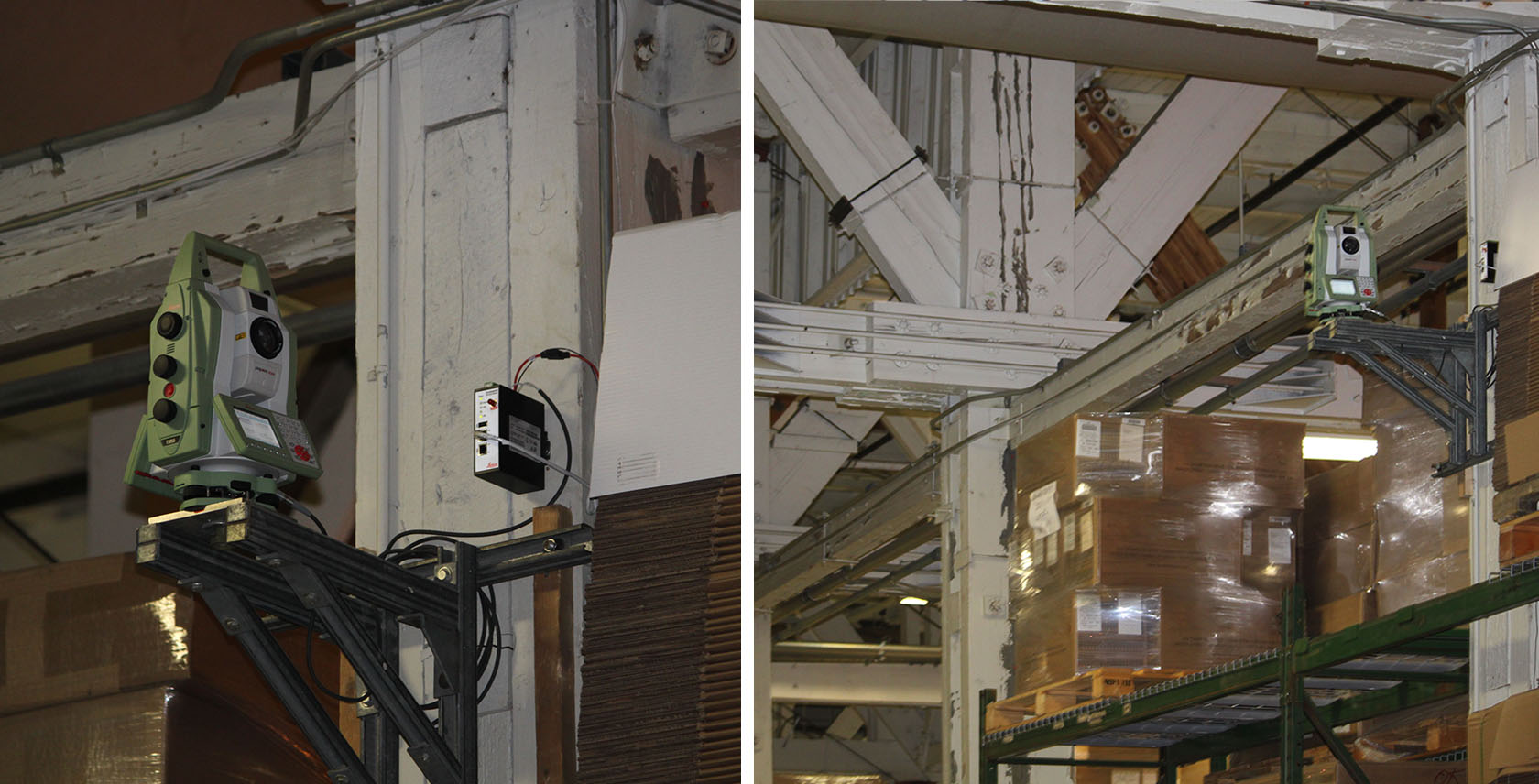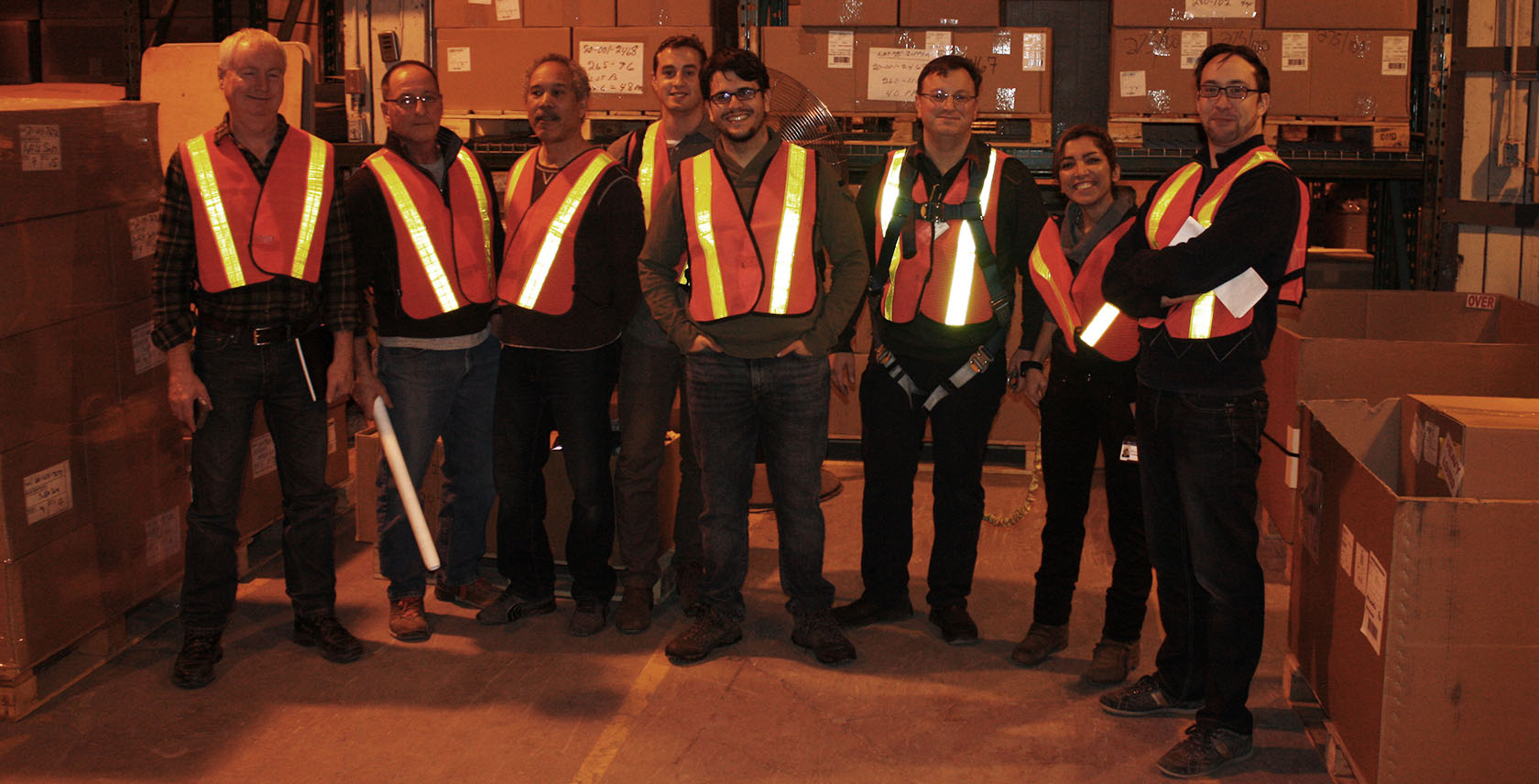Monitoring the structural health of 80-year-old Royal Canadian Air Force Warren Truss hangars
Case study

Author: TFD
Monitoring the Structural Health of 80-year-old Royal Canadian Air Force Warren Truss Hangars
Meant to be temporary, many of the hastily constructed aircraft hangars built during WWII are still in use across Canada. For example, the Canadian Armed Forces still maintain approximately 70 Warren truss hangars across the country. The Canadian Forces Base (CFB) in St-Jean in Québec has several Warren truss hangars that it takes care of to meet current operational requirements. Although still functional, the hangars do pose some structural integrity and serviceability concerns. Safety limits placed on the buildings have an impact on CFB St-Jean’s day-to-day operations, so the Canadian Department of National Defence (DND) asked a research team (The RMC Green Team) from the Royal Military College of Canada (RMC) to investigate. The team devised a remote, continuous, real-time structural health monitoring (SHM) programme that includes the use of Leica Geosystems instruments. The SHM is both an alert system and a tool for in-depth structural analysis.
Developing a research-based, data-driven approach to building safety
The heritage timber hangers, constructed using 34m long double-span Warren trusses, were part of the Royal Canadian Air Force’s contribution to the British Commonwealth Air Training Plan in 1942. Material shortages during wartime, material degradation, environmental stresses, and significant repairs have weakened or altered the stress distribution within the buildings. To define whether they are still safe to use, DND approached Dr Nicholas Vlachopoulos, Full Professor, Civil Engineering Department, from RMC to design and install a monitoring program. Lt Henry Helmer-Smith, a PhD student, is the lead researcher on the project, supervised by both, Dr Nicholas Vlachopoulos and Dr Marc-André Dagenais from the Civil Engineering Department at RMC.
Hangar 1 – now serving as a supply depot at CFB St Jean – was the structure selected to be monitored. This hangar must be evacuated when snow on the roof exceeds 10 cm (4 inches), something that’s certainly not out of the ordinary in Québec during the winter months. Among other questions, the team wanted to find out if this snow accumulation limit warranted evacuations.
Long-term, continuous and remote monitoring with real-time alerts
The RMC Green Team built a monitoring system including solutions such as the Leica Nova TM50 automatic total station with reflectorless EDM (R1000) and Leica GeoMoS software suite. Dr. Vlachopoulos says: “When first approached to come up with a structural health monitoring solution for the performance of Warren truss structures within the Department of National Defence, naturally, automatic total stations and in particular, Leica Geosystems products, were on the initial list of possible solutions.”
The key requirements were for the total stations to be continuously operable, remotely accessible, employable long-term, and most importantly, capable of transmitting alert messages. Deflection monitoring was included in the program, with the instruments able to send the users or the hangar occupants an alarm to evacuate based on absolute, short-term, and long-term displacements of the trusses and other structural members within the hangar. The comprehensive and flexible GeoMoS Monitor system includes several other alert options including sensor connection loss, power failures, target loss (line-of-sight issues), among many others. The alarm system was programmed to communicate directly with users via email (built into GeoMoS Monitor) or SMS text by means of ASPSMS.com, an SMS monitoring solution which is compatible with the GeoMoS Suite. The Leica TM50 was chosen because it met the requirements and because compatible Leica software can transmit alerts via email and text in real-time for emergencies. This feature is often used for monitoring discrete points of buildings.
“Extremely effective instrument for emergency monitoring”
The Leica TM50 automatic total station was installed in Hangar 1 in the spring of 2018 and is still operating today. It is programmed using GeoMoS Monitor to measure more than 20 targets throughout the building at two-hour intervals. GeoMoS Analyzer is then used to read and display all processed data both remotely and in real-time. Based on assigned limits, the frequency of readings can be increased and become continuous when needed. If limits are met, then alerts are issued. Helmer-Smith says: “The remotely operable capabilities of the TM50 combined with the transmitting and displaying of data in real-time make it an extremely effective instrument for emergency monitoring.” The base has been able to reduce the number of evacuations from Hangar 1, because of the accurate and real-time feedback provided by the total station.
“Significantly more user-friendly than other equipment”
Before the monitoring equipment was installed, the research team built a quarter-size scale model of a single-span truss to test in the Structures Laboratory at RMC. The laboratory phase aimed to test the monitoring system and problem solve any limitations. Dr Vlachopoulos says: “The total station itself was very user-friendly and only took a few hours to learn. The software and messaging configuration took a few days to optimise and fully understand. Notably, this instrument was significantly more user-friendly than other equipment we tested.”
Expanding the cost-effective monitoring program nationwide
Besides the successful emergency monitoring, the Leica Geosystems total station is also used for an in-depth structural analysis of Warren Truss hangars. This in-depth analysis has provided important information regarding the true behaviour of the truss structure. The solution has been cost-effective because it cuts down on necessary site visits. The team accesses the total station remotely via GeoMoS Monitor and carries out discrete surveying from their office in Kingston, more than 300 km away. Following the trial, the monitoring program will be optimised with a view to expand the project nationwide. If safe, the hangars will continue their long and exemplary service.
Interested in monitoring? Please feel free to read further case studies, showing how our customers use our solution to improve their monitoring workflow:



























